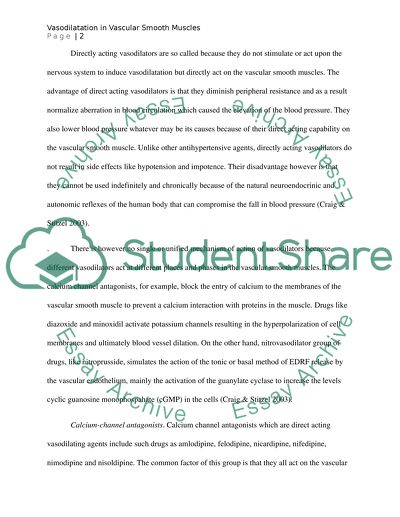Cite this document
(“Discuss the mechanisms by which substances act directly on vascular Essay”, n.d.)
Discuss the mechanisms by which substances act directly on vascular Essay. Retrieved from https://studentshare.org/miscellaneous/1552158-discuss-the-mechanisms-by-which-substances-act-directly-on-vascular-smooth-muscle-to-cause-vasodilatation-in-addition-identify-potential-targets-in-vascular-myocytes-for-development-of-new-drugs-in-the-treatment-of-cardiovascular-disease
Discuss the mechanisms by which substances act directly on vascular Essay. Retrieved from https://studentshare.org/miscellaneous/1552158-discuss-the-mechanisms-by-which-substances-act-directly-on-vascular-smooth-muscle-to-cause-vasodilatation-in-addition-identify-potential-targets-in-vascular-myocytes-for-development-of-new-drugs-in-the-treatment-of-cardiovascular-disease
(Discuss the Mechanisms by Which Substances Act Directly on Vascular Essay)
Discuss the Mechanisms by Which Substances Act Directly on Vascular Essay. https://studentshare.org/miscellaneous/1552158-discuss-the-mechanisms-by-which-substances-act-directly-on-vascular-smooth-muscle-to-cause-vasodilatation-in-addition-identify-potential-targets-in-vascular-myocytes-for-development-of-new-drugs-in-the-treatment-of-cardiovascular-disease.
Discuss the Mechanisms by Which Substances Act Directly on Vascular Essay. https://studentshare.org/miscellaneous/1552158-discuss-the-mechanisms-by-which-substances-act-directly-on-vascular-smooth-muscle-to-cause-vasodilatation-in-addition-identify-potential-targets-in-vascular-myocytes-for-development-of-new-drugs-in-the-treatment-of-cardiovascular-disease.
“Discuss the Mechanisms by Which Substances Act Directly on Vascular Essay”, n.d. https://studentshare.org/miscellaneous/1552158-discuss-the-mechanisms-by-which-substances-act-directly-on-vascular-smooth-muscle-to-cause-vasodilatation-in-addition-identify-potential-targets-in-vascular-myocytes-for-development-of-new-drugs-in-the-treatment-of-cardiovascular-disease.


